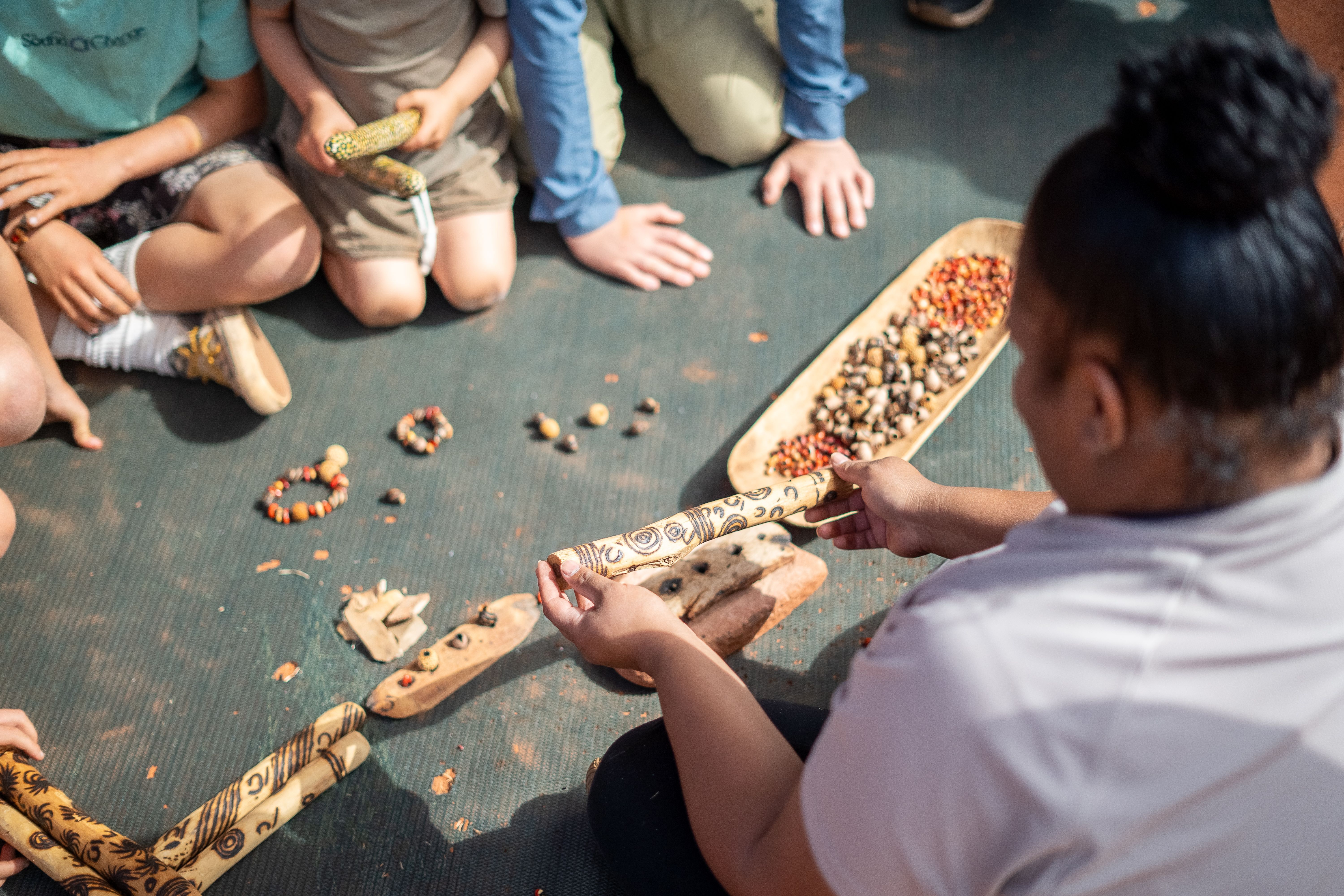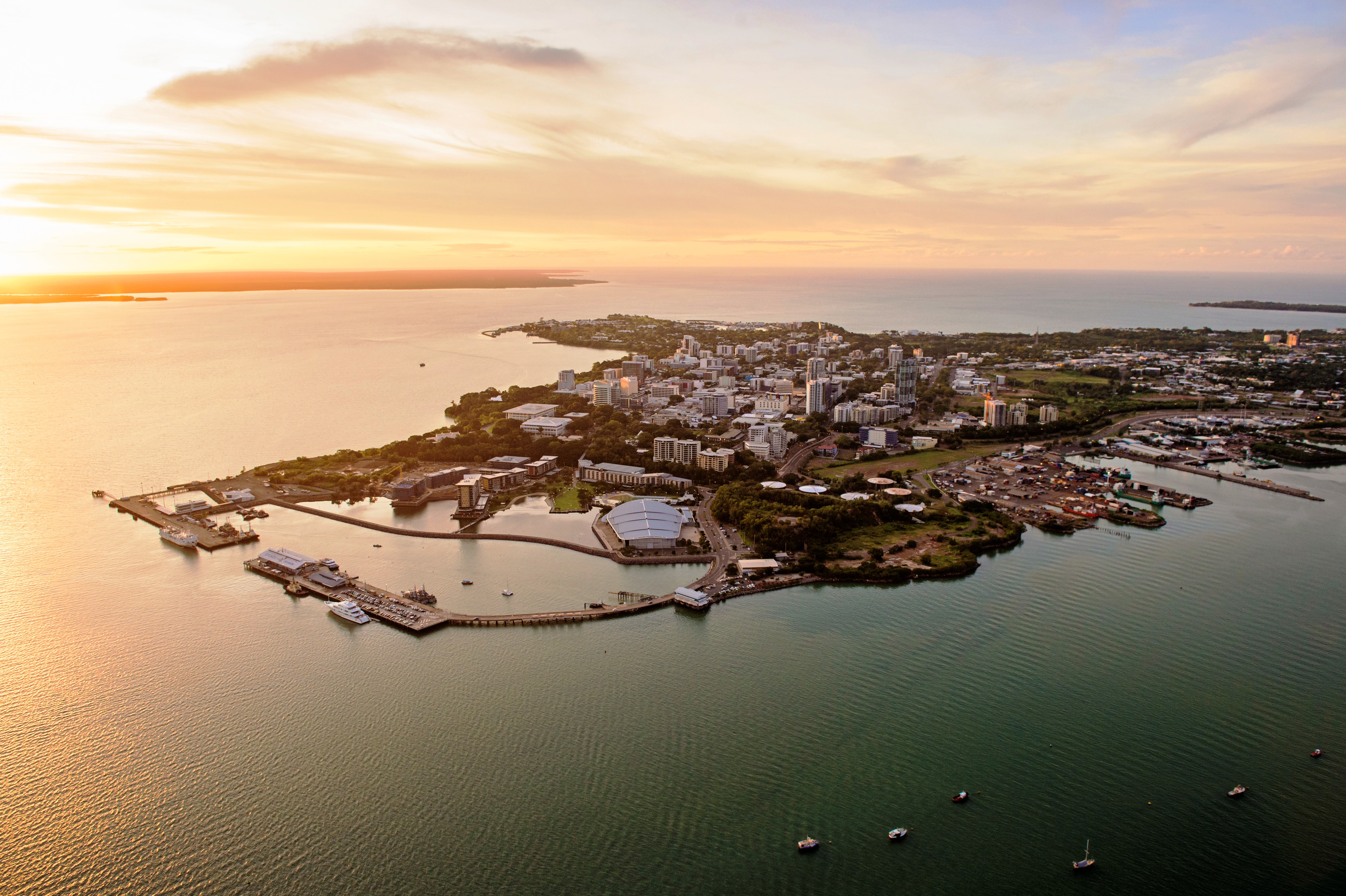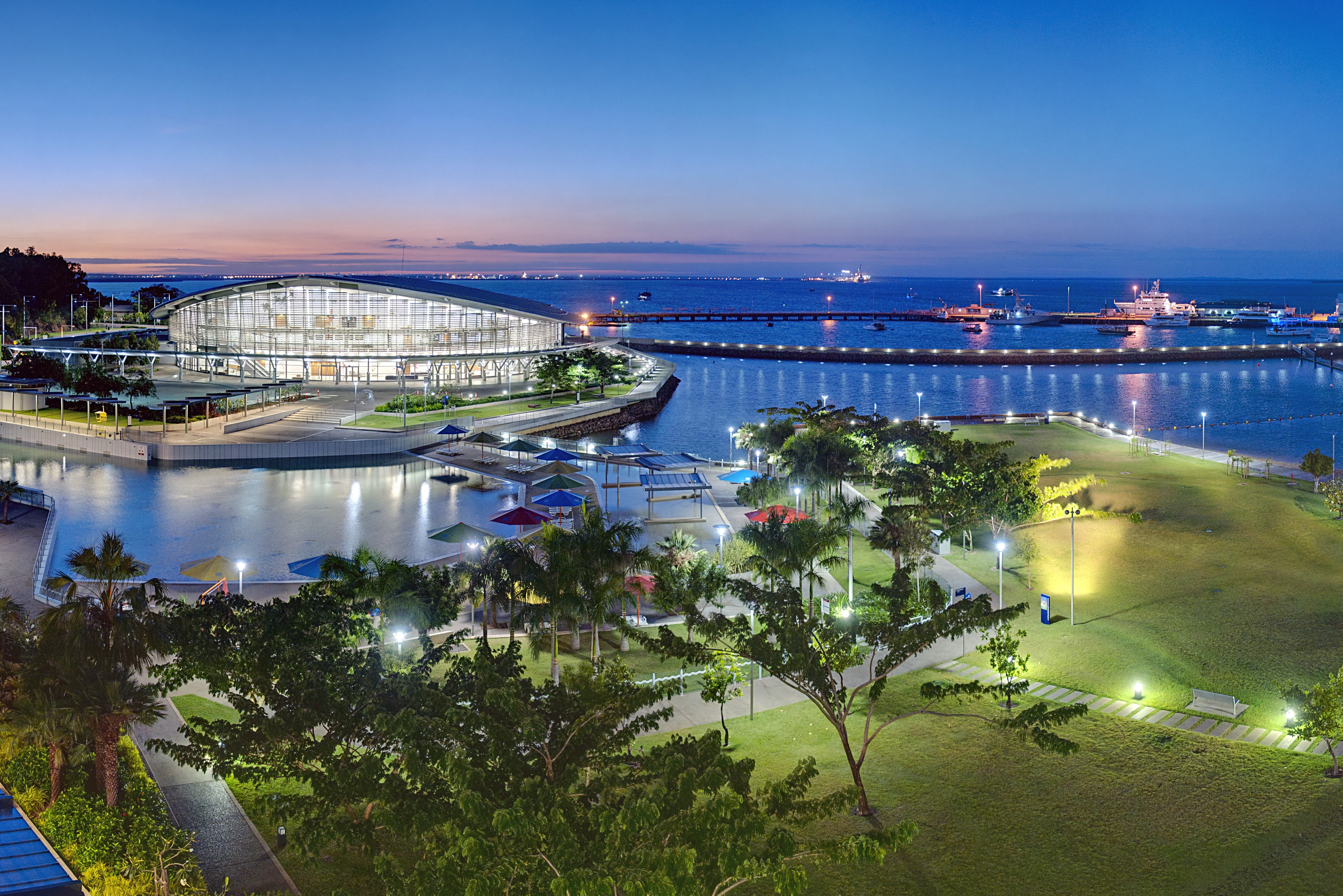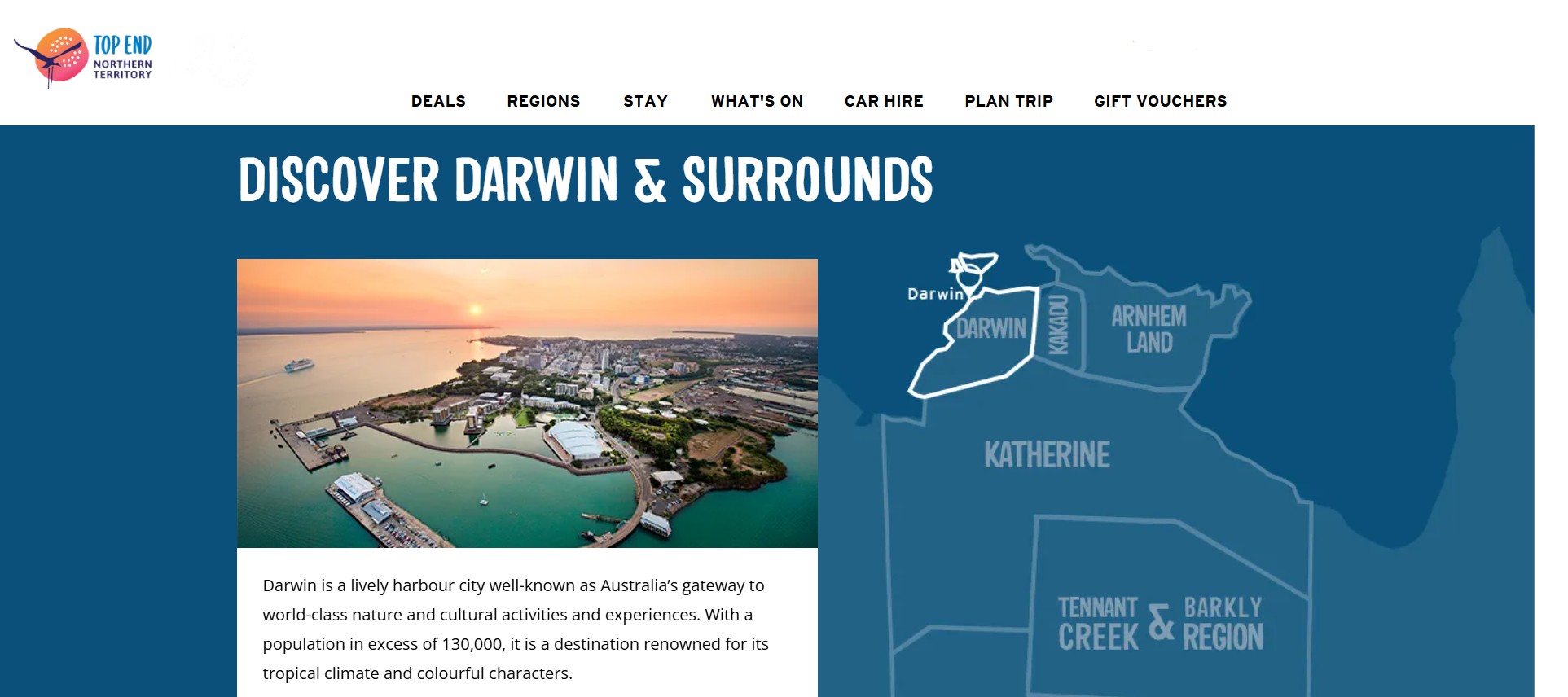
About Darwin
Australia's Only Tropical City
About the city
Nestled on the northern coast of Australia, Darwin is a vibrant city and the capital of the Northern Territory. Renowned for its tropical climate, rich culture and history, as well as stunning natural landscapes. The city’s unique blend of European, Asian and Aboriginal influences makes it a dynamic and welcoming destination.
A brief history
Indigenous Roots - The Larrakia people, Darwin’s traditional custodians, established trade routes with neighbouring Indigenous groups and Indonesian fishermen, maintaining a deep spiritual connection to their saltwater country.
European Settlement - Named after Charles Darwin, the city was founded as Palmerston in 1869 and renamed Darwin in 1911. It grew rapidly after gold was discovered in Pine Creek in 1871 and became a city in 1959.
World War II & Cyclone Tracy - Darwin was heavily bombed by Japan in 1942, with over 60 attacks until 1943. On 25 December 1974, Cyclone Tracy devastated the city, leading to mass evacuations and a major reconstruction effort.
Self-Governance - Darwin’s first municipal council was elected in 1957. The Northern Territory gained self-governance in 1978, celebrated annually as Territory Day. In 2012, Darwin City Council was renamed City of Darwin.


Explore the city
Start your Darwin adventure at the Museum and Art Gallery of the Northern Territory, showcasing exceptional Aboriginal art, maritime history, and exhibits on Cyclone Tracy. Don’t miss Sweetheart, the museum’s famous 5m-long stuffed crocodile! The Defence of Darwin Experience offers an immersive look at the city's pivotal role in World War II, detailing the 1942 Japanese bombings and Darwin’s resilience. No trip is complete without visiting the Mindil Beach Sunset Markets. Enjoy live entertainment, sample diverse cuisine, and browse local arts and crafts—all against the backdrop of a stunning Darwin sunset. Other markets, like Nightcliff and Parap, offer even more chances to experience the local culture.
Food & Drink
Blending influences from its northern neighbours in Southeast Asia with a rich Indigenous heritage, Darwin’s food and drink scene is a vibrant mix of fusion cuisine, bold exotic flavours, and relaxed al fresco dining. Here are some recommendations:
Cafés: Le Bistro Rakuya, Eva's Botanical Gardens Café, Crazy Acres Mango Farm & Café
Street Food: Mindil Beach Sunset Market, Parap Village Market
Craft Beer & Local Spirits: The Trader Bar, Charlie’s of Darwin, One Mile Brewery, Smoke & Oak, Six Tanks
Exotic Flavours: PepperBerry Restaurant at Hilton Darwin, Hotel Darwin, Little Miss Korea, Yogi’s Way, Madame Za
Sweet Treat: Darwin Chocolate Factory, Johnn Johnns Gelato, Dimitrios Speciality Cakes, Rays Patisserie and Café
How to get to Darwin
Visitors can reach the Northern Territory by air, road, bus, or rail. Darwin International Airport is the main air hub, next to Alice Springs and Ayers Rock Airport. Major airlines provide easy access, and regional flights operate via Airnorth. Well-maintained highways connect the Northern Territory to South Australia, Queensland, and Western Australia for road travellers. Affordable bus services link Darwin with neighbouring states. For a scenic rail journey, The Ghan travels 2,797 km between Adelaide and Darwin, passing through Alice Springs and Katherine.
You can find more information about getting around in Darwin on this website. Specific information about the conference venue - the Darwin Convention Centre - and how to reach it, is available on the Conference venue page.
About the Northern Territory
Darwin serves as a gateway to some of Australia’s most breath-taking national parks, including the vast and culturally rich Kakadu National Park as well as Litchfield National Park. Guided tours are available from Darwin for all these destinations, making it easy to experience the Northern Territory’s natural beauty.
Litchfield National Park & Berry Springs Nature Park
Just an hour from Darwin, Berry Springs Nature Park offers crystal-clear waterholes, bushwalking tracks, and picnic spots. Be sure to check for crocodile warnings during the wet season. Nearby, Litchfield National Park is perfect for a day trip, featuring stunning waterfalls like Florence Falls and Wangi Falls, along with unique magnetic termite mounds and diverse wildlife.
Kakadu & Katherine
Take the scenic Nature’s Way Drive to Kakadu National Park, a UNESCO-listed wonder with ancient rock art, thundering waterfalls, and abundant wildlife. Stop at Ubirr for a breathtaking sunset or take a cruise to see jumping crocodiles on the Adelaide River. Continue south to Katherine to explore Nitmiluk Gorge by boat or hike the Jatbula Trail for an unforgettable trek.

Source: Tourism NT/Joshua Griffen Litchfield National Park
For more travel ideas, you can visit the Top End Tourism website.
ESP11
 Registration website for ESP11
Registration website for ESP11ESP11iskra.konovska@fsd.nl
ESP11iskra.konovska@fsd.nlhttps://www.espconference.org/esp11
2025-06-23
2025-06-27
OfflineEventAttendanceMode
EventScheduled
ESP11ESP110.00EUROnlineOnly2019-01-01T00:00:00Z
To be announcedTo be announcedevent registration made easy
aanmelder.nl is the software partner for events.
Click here to discover the software.
